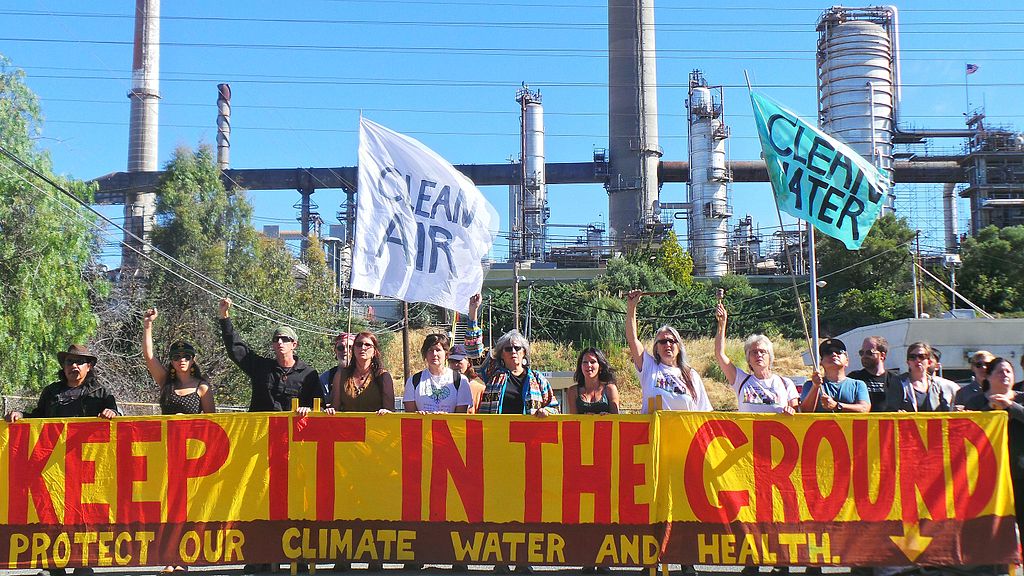What Is Carbon Offsetting and does it really work?
- Offsetting is one way to counterbalance the carbon you can't avoid emitting, be it through travel, diet, energy use, or otherwise.
-
Carbon offsetting is not a one-size-fits-all solution or an excuse to avoid emissions reduction in the first place.
- Learn more about carbon offsets, carbon credits, how to calculate your carbon footprint, and how to offset it.

Carbon offsetting allows people to contribute to the environment in a positive way when reducing greenhouse gas emissions is not an option. Offsets shouldn’t be used in place of making responsible lifestyle choices, per se, but they’re one way to compensate for the carbon emitted for transportation, food, energy, clothing, and pretty much every single product you use.
Learn more about what they are, how they work, and whether they’re really worth it.
What Is Carbon Offsetting?

Carbon offsetting is the idea of counterbalancing carbon emissions by supporting carbon capture or climate action projects. Those projects often focus on reforestation, bioremediation (using microbial species to clean contaminated land), or renewable energy.
Both companies and individuals participate in offsetting. The first step in offsetting your personal emissions is to calculate them. You could calculate just the emissions of a specific activity—say, flying on a plane for vacation or eating a meat-heavy diet—or attempt to measure your entire carbon footprint (a colossal undertaking). Once you have that number, you then choose an organization you trust through which to purchase offsets.
That organization’s mission doesn’t have to directly line up with the source of your emissions. For instance, you can offset a flight by funding a tree planting project. This works because “climate change is a non-localized problem,” says the Stockholm Environment Institute’s Carbon Offset Research and Education (CORE) program. “Greenhouse gases mix throughout the atmosphere, so reducing them anywhere contributes to overall climate protection.”1
Carbon Offsets vs. Carbon Credits
Though the terms “carbon offset” and “carbon credit” sound similar, one is the product of the other. Carbon offsets generate carbon credits. A carbon credit is an allowance that represents one metric ton of carbon dioxide equivalent. It doesn’t have to be obtained through offsetting, though; for instance, a company might accrue carbon credits by using less than their allotted amount the year before.
Criticism of Carbon Offsetting

Offsetting gets a bad rap not because it’s a bad thing to do—on the contrary, offsetting emissions could be necessary to meet net zero targets—but, rather, because too many corporations use it as a greenwashing tool.
In a 2020 post titled “The biggest problem with carbon offsetting is that it doesn’t really work,” Greenpeace argued that airlines and oil companies alike are throwing around the word “offset” to essentially trick consumers into believing their inherently polluting practices are somehow justified.2
One example of this is Shell, the seventh largest polluter in the world, which claims to offset the oil and gas it sells but continues to wreak havoc on the planet by drilling and literally fueling carbon pollution.3 Another example is easyJet, which claimed in 2009 that offsets allowed its flights to have a smaller carbon footprint than a Toyota Prius. Those claims were widely disputed and disproven.4
Greenpeace’s post concluded that carbon offsetting must supplement, not replace, real emissions reductions to make a difference. They can’t be merely an excuse to go about business as usual.
How to Calculate Your Carbon Footprint
Calculating carbon emissions is a cumbersome process that involves complex abbreviations like kgCO2e (kilograms of carbon dioxide equivalent), GWP (global warming potential), and kWh (kilowatt hours). There are direct and indirect emissions—for example, direct emissions from a fossil-fueled car versus the emissions generated through fossil fuel extraction and production. Each is calculated differently.
One easy way to calculate emissions manually in the case of fuel consumption is to multiply the number of gallons used by 22 to get the pounds of CO2 emitted.5 However, things get more complicated when calculating emissions from energy use or food.
The University of California, Berkeley’s CoolClimate calculator seems to be the most credible way of measuring your carbon footprint, and carbon offset companies like Wren have integrated CoolClimate research into their technology. All you need to do is answer questions about your lifestyle, like transportation habits, clothing, and diet. Then, you can offset half or all of it with a monthly subscription or a one-off payment.
Purchasing Carbon Offsets
You can purchase carbon offsets through a designated carbon offset provider like Wren, Native Energy, Sustainable Travel International (for air travel), and Carbon Fund. Alternatively, you can purchase directly through companies that provide the added service, but make sure it’s a company you trust.

The cost of offset schemes varies greatly from less than $1 to more than $50 per ton of CO2. “The price depends on the type of carbon offset project, the carbon standard under which it was developed, the location of the offset, the co-benefits associated with the project, and the vintage year,” says the nonprofit Second Nature. On average, offsets cost between $3 and $6 per ton.6
A less direct way to offset your emissions is through a tree-planting scheme like Click A Tree ($5 to $30 per tree) or EcoForce’s Buy a Tree program ($84 per tree, including its care for two years).
Whichever route you take, carbon offsetting is a great way to give back to the planet in addition to everyday sustainable habits.
Offset Your Carbon With These Schemes:
Sources:
- “What is a Carbon Offset?” Stockholm Environment Institute Carbon Offset Research and Education (CORE) Program.
- “The biggest problem with carbon offsetting is that it doesn’t really work.” Greenpeace UK. 2020.
- “What do we know about the top 20 global polluters?” The Guardian. 2019.
- “Greenwash: easyJet’s carbon claims written on the wind.” The Guardian. 2009.
- “Calculating Your Carbon Footprint.” National Oceanic and Atmospheric Administration.


